A nice sit-down
On energy and infrastructure (but definitely more interesting than that sounds)
I fell ill. I like using the word “to fall” about illness because that feels like the right direction. Although mine was a slow-motion fall: I wasn’t sure I was ill, but I wasn’t right, and then I was ill. A cold, I thought, but now I think it was Covid, from the elemental crushing fatigue that I remember from Covid and Long Covid: where you can do something, but then you have to sit down. On the Sunday I ran an epic fell race at Heptonstall.
No, I don’t know why I do that head cocking thing either. Maybe I think I’m a dog. By Wednesday, I was in bed with razors in my throat and a dry cough, which was a sleep-depriving combination. There are two signs I rely on to know I am ill when I’m still in the “not-quite-right-but-not-ill” stage: I can no longer drink coffee, and the thought of running is horrific. Both of these were now present, and I haven’t run for two weeks. Me being me, I read up on why I had been able to run 15 miles one week and the next was wondering if I could walk for two miles and whether there were benches.
I’ve often been puzzled by the word “energy,” usually when it is used by yoga teachers. They talk of releasing energy or getting more of it and if I hadn’t usually been in a yoga pose, I would have asked what they meant. Electricity? Some life-force qi kind of thing? They were never specific and intellectually it bothered me.
The internet didn’t help me much so I messaged my medical friend Lisa. She responded promptly. “Mitochondrial damage.”
This rang a bell. When I’d had Long Covid, and spent six months wondering why I could not get better, I had also researched and researched. I joined a Facebook group called Long Covid for endurance athletes and learned about vitamin stacks and ATP and mitochondria. I had forgotten. Now I taught myself to remember again. Mitochondria are the batteries of every cell. They are passed on only by women, which explains a lot. And the coronavirus attacks them as it seems to attack whatever it can.
The reason I needed to find benches along my piddling two-mile walk was that my cell batteries were fused and rusty because Covid had assaulted them. They could not produce adenosine triphosphate as efficently as usual. ATP is the energy those yoga teachers are always banging on about, because it converts nutrients into something that powers you to go around doing your business without having to have a nice sit down. The reason I needed a nice sit down was that I was asking my body to do something that actually uses a lot of calorific energy — walking — while the tools I had to do that were still reconstituting themselves. So the next time your yoga instructor tells you to create more space in your hip joint to release some energy, stick your hand up from that one-legged balance and say, “I think you mean adenosine triphosphate.”
Prada Frames
My life used to have more travel and more talks and more glamour, I suppose, and for various reasons it has calmed down. So when I do get the chance to remember that that is how I used to live, I take it. I was invited a few months ago to take part in a symposium called Prada Frames in Milan. This is a three-day event of talks put on by Fondazione Prada and this year’s theme was infrastructure. I could have chosen sewers, but I chose ships. And the reason I went even though I was still not fully well was the location: Prada being Prada, it had managed to access the Padiglione Reale at Milan Central station. I have views on fascism of course, including that we are living through its new age, but despite my best efforts, I am still seduced by the uber-fascist architecture of Milan Central station. I mean, look at it:
The Padiglione Reale — the Royal Pavilion — was the King’s waiting room, before the King was invited to abdicate after World War II. By “pavilion” I mean a massive marble palace. We arrived early and were given a tour. This was where I was to speak:
My friend Martino, a Milanese by birth and upbringing, said his mother called this room “the one with the African marbles.” Its actual name is Sala delle Armi. Though I thought it was very Hunger Games, and wasn’t sure about the wisdom of sitting up there in those astonishing velvet armchairs: wouldn’t it just invite someone to shoot a crossbow at you?
The tour continued upstairs, to the King’s bathroom. Look at this door.
And behind the door was something even better. Not just the bidet. Italy is one of the few sensible European countries to still value the bidet. France has removed many of its bidets, Italy persists. And Italians therefore have cleaner anuses than the French. A debate for the European Parliament.
No, not just the bidet. But the escape route. Every King must have a plan to evade assassins. Kings have been killed in latrines (one of the Edwards, I think). It makes assassin sense: it is a confined space and difficult to leave. Unless you have one of these.
Magnifico. But only a few of us — the smallest and thinnest — could have fit up there, so I asked Martino how diddy the King was. Tiny, he said. He was so small that he couldn’t carry a normal sword because it trailed on the ground, so a special swordette (sciaboletta) was created for him.
Prada being Prada, the architectural glory did not end with the Padiglione Reale. Out through the doors, onto the platform of the station, and there was this waiting for us.
The Arlecchino (Harlequin) was designed in the 1960s to coincide with the Olympic Games. It was an electric train; each carriage was decorated in a different colour. There were a few in operation until the 1980s, but only one was able to be converted to work with modern rail infrastructure. It has been renovated by the FS Foundation, the Italian railways foundation. More here. It is a beauty.
The event on there was a bit odd: after the talks, people would be funnelled to the train, served a drink and peanuts, then each carriage would have a speaker doing a reading. I had chosen to read from my book, but when I talked to my fellow speakers in the morning, they had all been more lateral and interesting with their choices, so I changed. Instead I chose to read Night Mail by W.H. Auden, because it is such an easy poem to read; it almost reads itself, so well did Auden master the rhythm. The organisers said, stand where you like, maybe in the middle, but that, in a carriage full of seated people, felt too weird. Too much looming. So instead I walked, reading the poem, trying not to trip over people’s feet. I did OK. I mean, I’m not Benjamin Britten, but I did OK.
One of the comments under one of the videos of Night Mail reads, “is this the world’s first ever rap song?”
Probably not, amongst many thousands of years of predominantly oral poetry and song.
We left the train and were funnelled back into the pavilion. The station was operational as normal, and commuters walked past us looking at us and the train but heading to catch theirs. I asked Jesse LeCavalier, a fellow speaker and architect, why train stations were so much less stressful than airports. Of course I understand that they are less securitised, but I was asking really about the space. We discussed it. Airports funnel you. They are about narrowness and micromanagement. You have to walk through duty free shops to get anywhere. There is noise and no relaxation. A train station is noisy but there is a depth and broadness of space. You are left to your own devices. The shops are there but not insistent.
And there is more air.
This is the bit where I politely urge you with Yorkshire grit to a) subscribe or b) upgrade to a paid subscription or c) click on the like button so I know you’ve read and maybe liked this.
Animal Hero of the week is on holiday. It will be back when I can think of one.


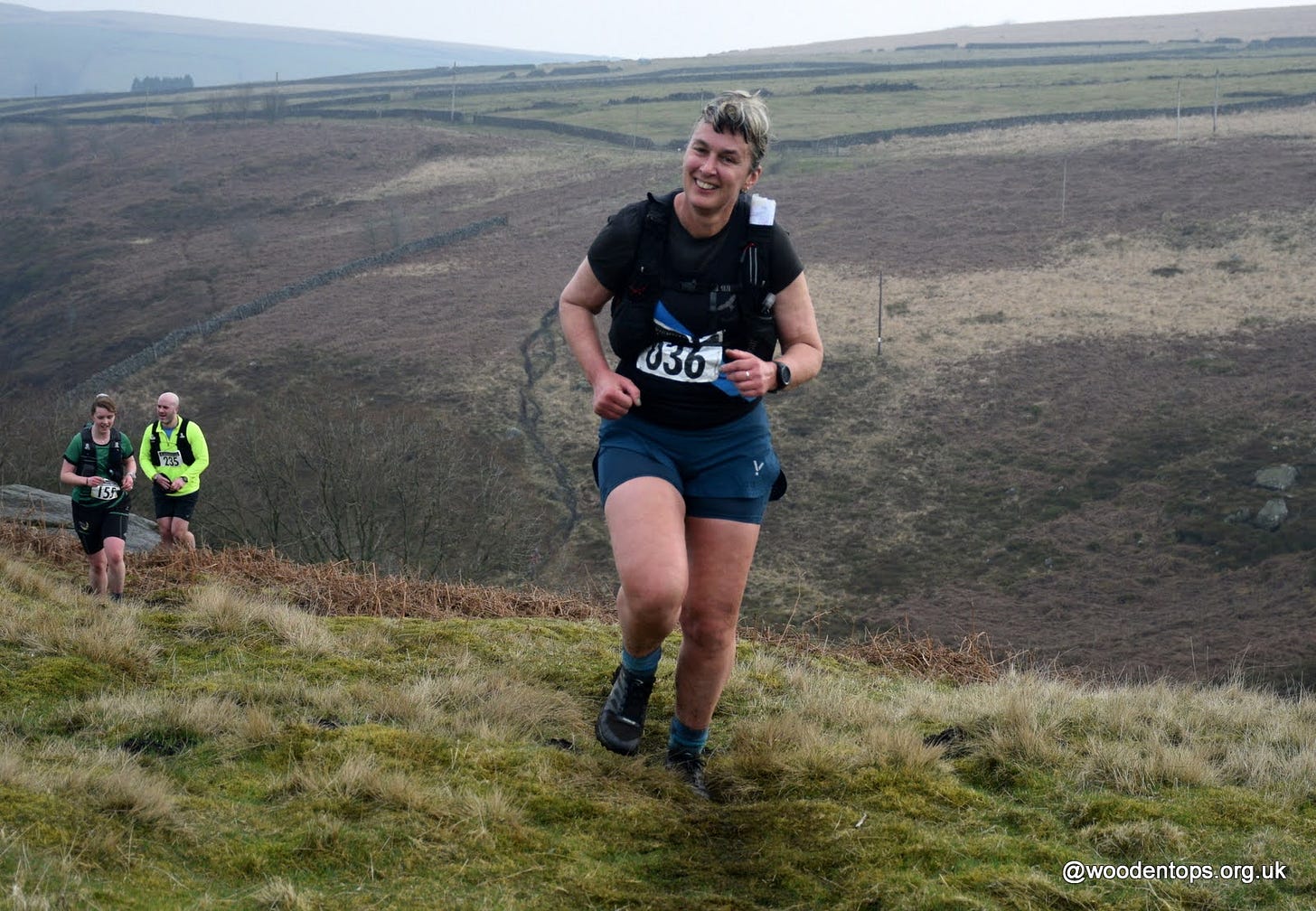
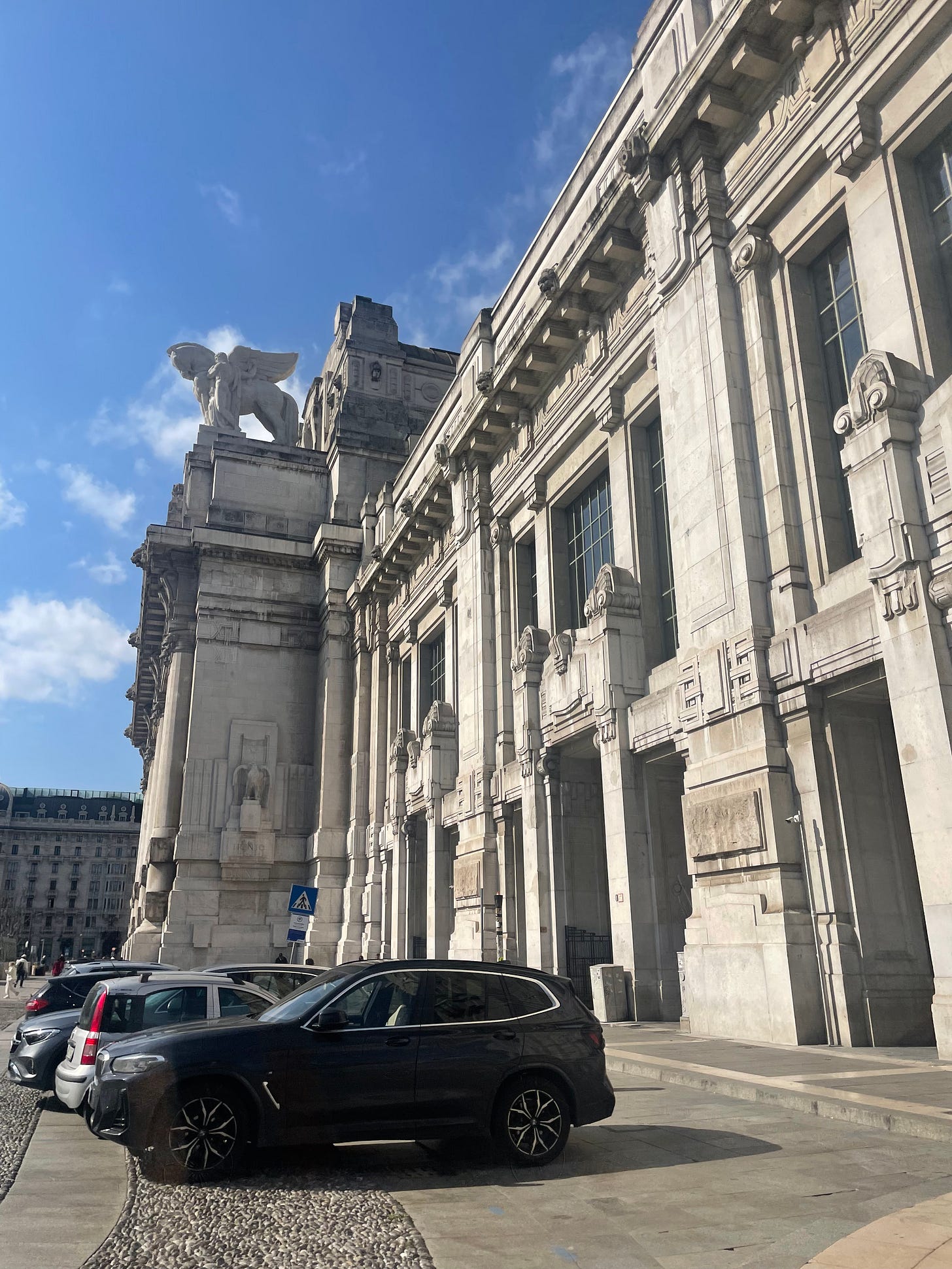
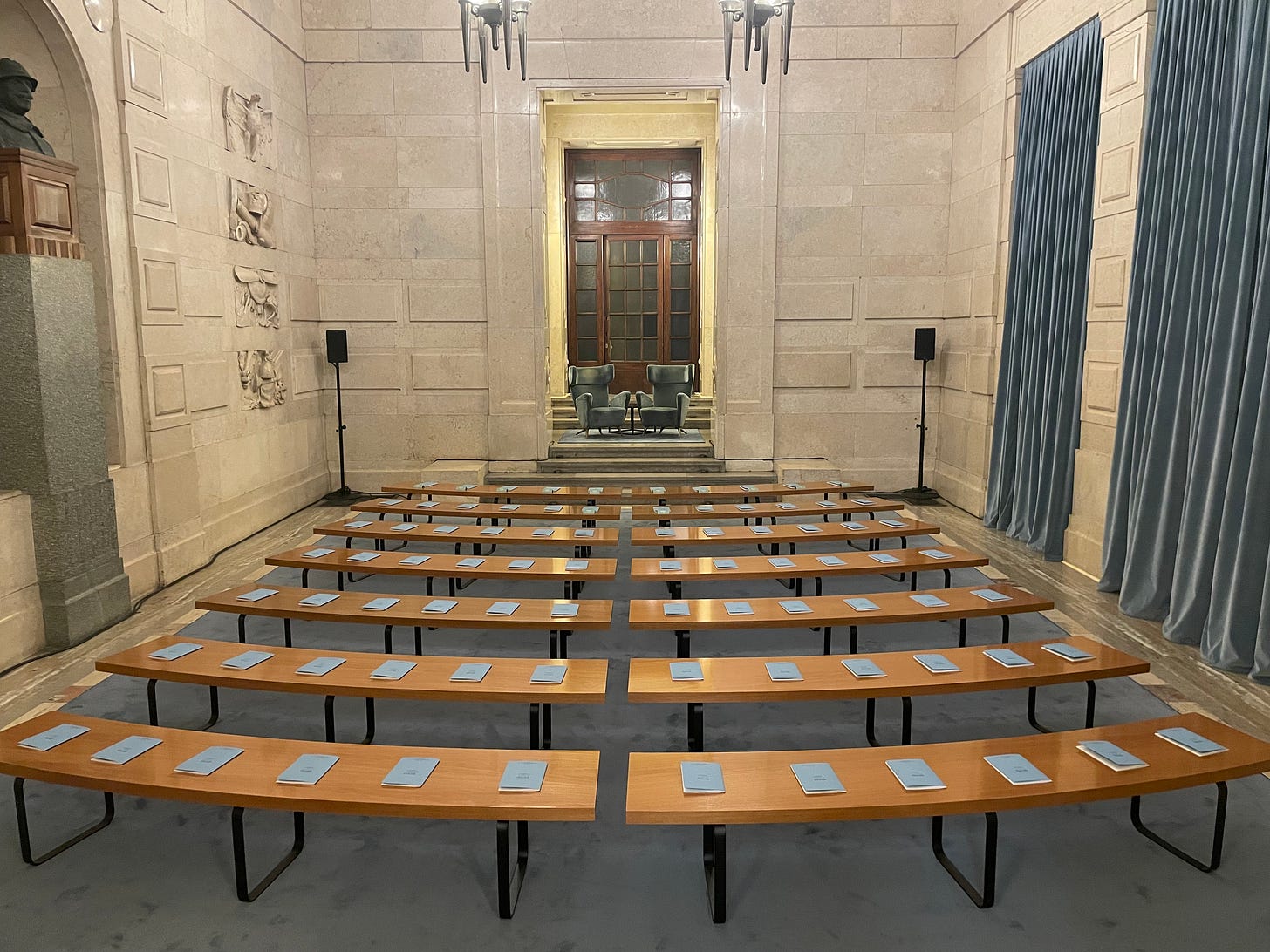
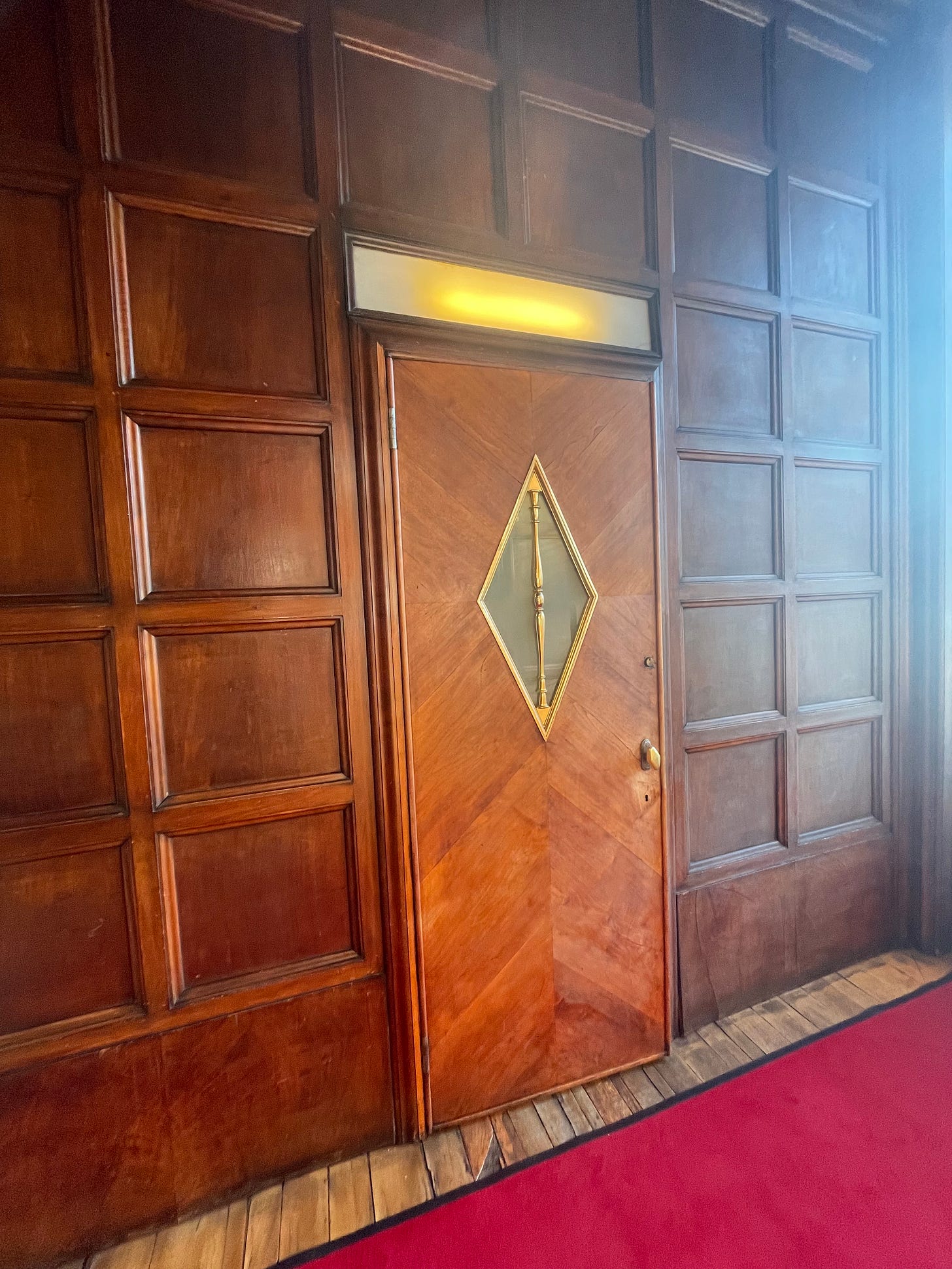
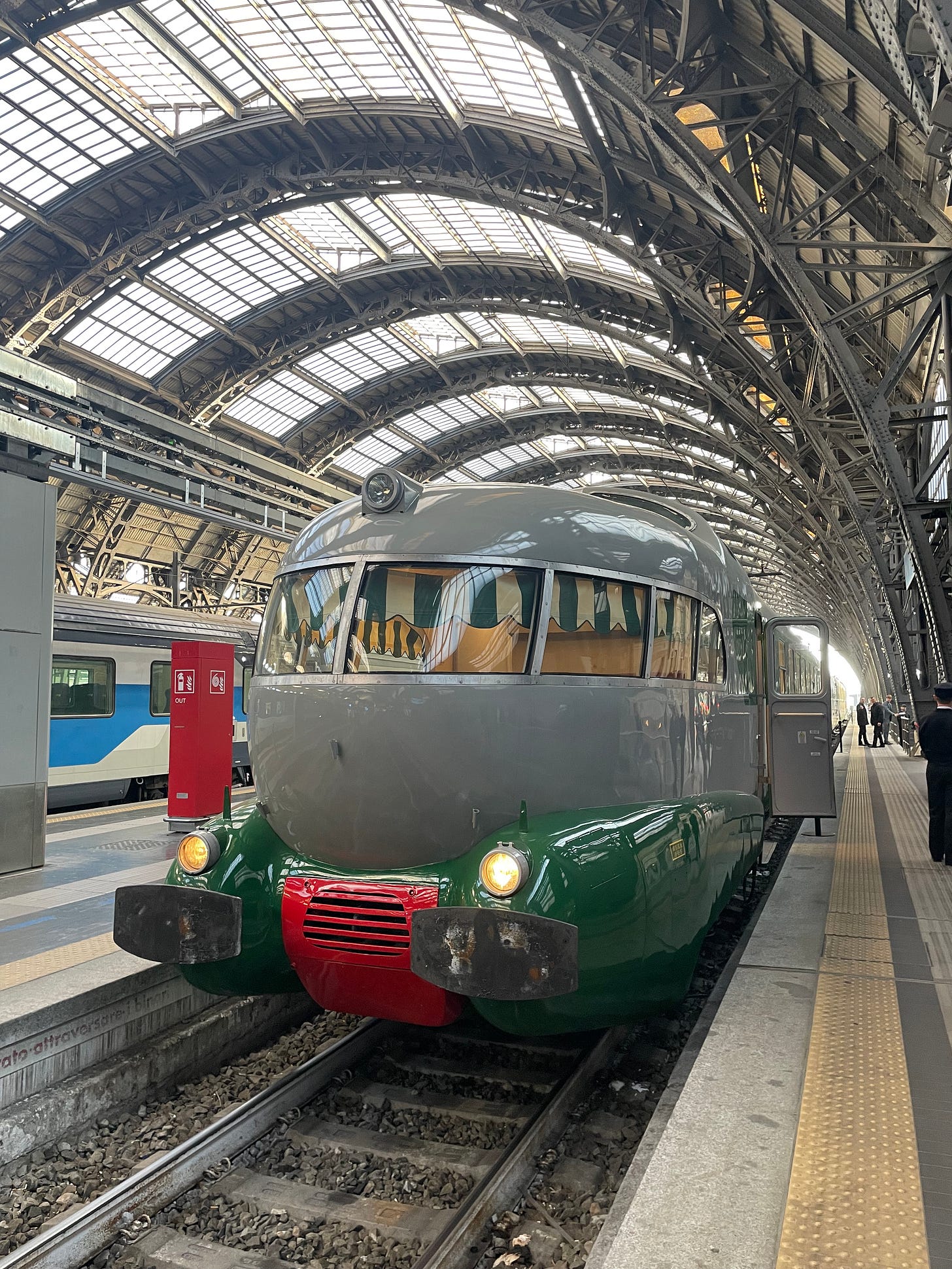
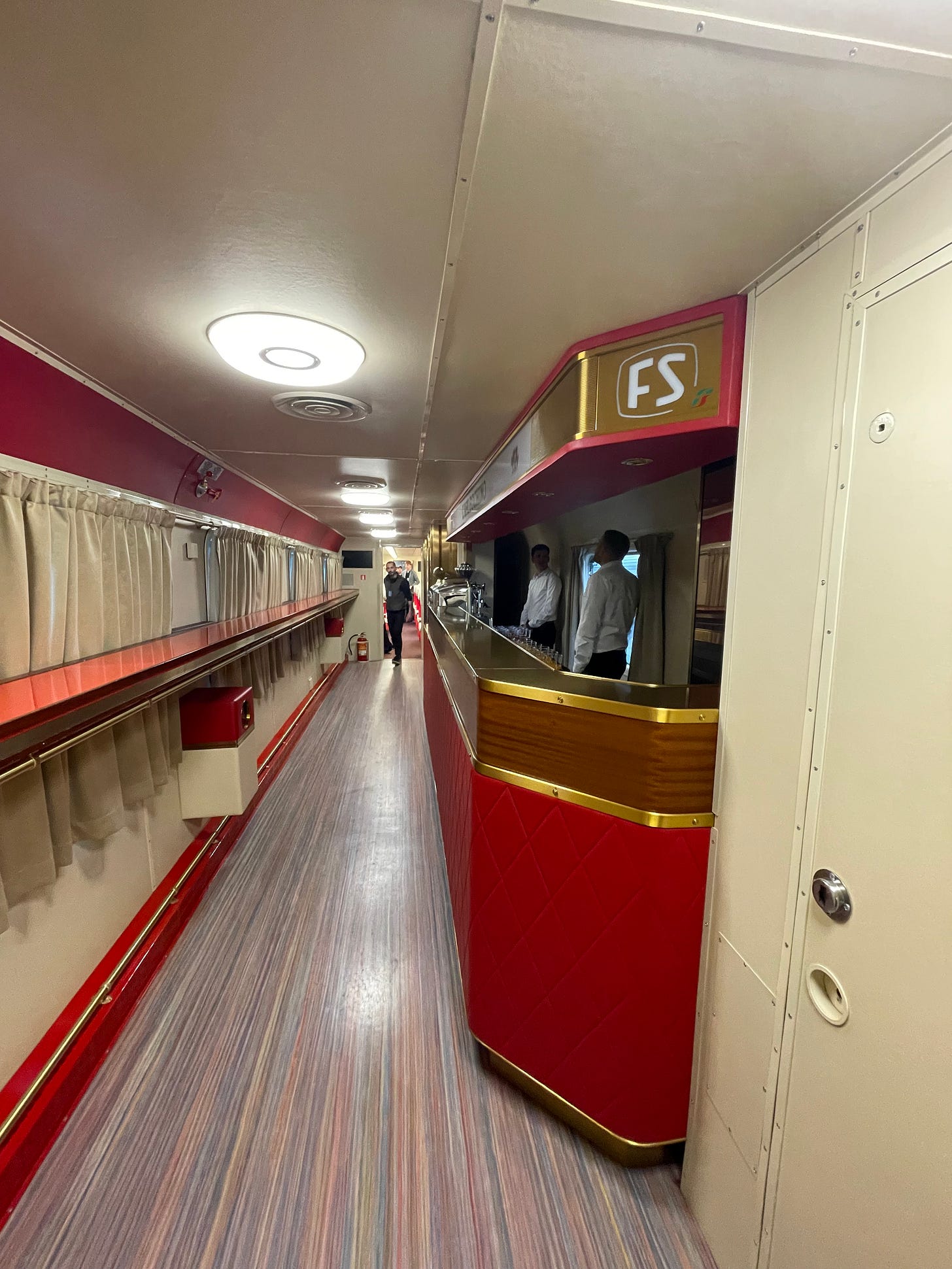
Can't beat a fancy train and a fancy loo
Really enjoyed this. Thanks
Justin S.